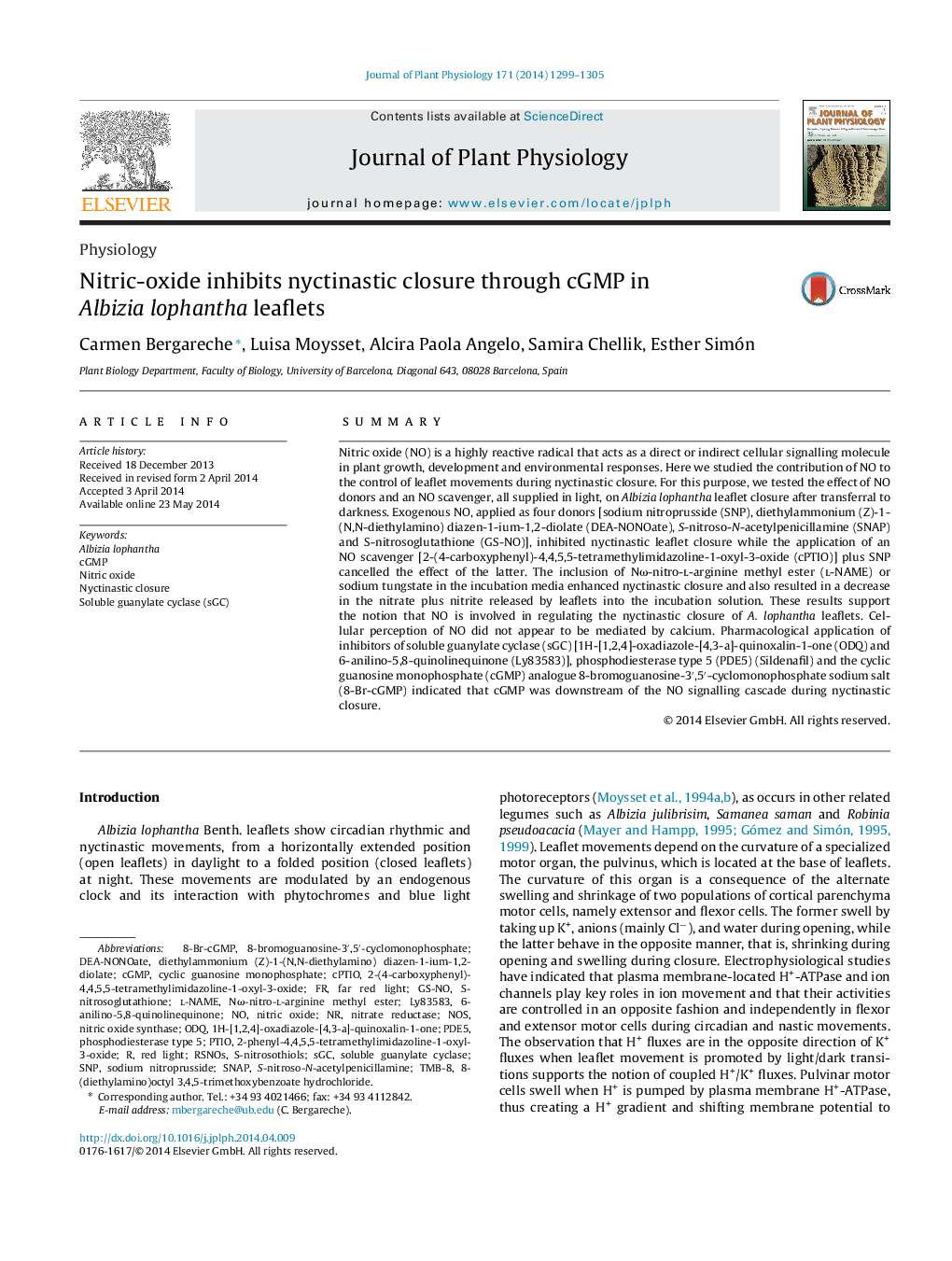| Article ID | Journal | Published Year | Pages | File Type |
|---|---|---|---|---|
| 2055714 | Journal of Plant Physiology | 2014 | 7 Pages |
SummaryNitric oxide (NO) is a highly reactive radical that acts as a direct or indirect cellular signalling molecule in plant growth, development and environmental responses. Here we studied the contribution of NO to the control of leaflet movements during nyctinastic closure. For this purpose, we tested the effect of NO donors and an NO scavenger, all supplied in light, on Albizia lophantha leaflet closure after transferral to darkness. Exogenous NO, applied as four donors [sodium nitroprusside (SNP), diethylammonium (Z)-1-(N,N-diethylamino) diazen-1-ium-1,2-diolate (DEA-NONOate), S-nitroso-N-acetylpenicillamine (SNAP) and S-nitrosoglutathione (GS-NO)], inhibited nyctinastic leaflet closure while the application of an NO scavenger [2-(4-carboxyphenyl)-4,4,5,5-tetramethylimidazoline-1-oxyl-3-oxide (cPTIO)] plus SNP cancelled the effect of the latter. The inclusion of Nω-nitro-l-arginine methyl ester (l-NAME) or sodium tungstate in the incubation media enhanced nyctinastic closure and also resulted in a decrease in the nitrate plus nitrite released by leaflets into the incubation solution. These results support the notion that NO is involved in regulating the nyctinastic closure of A. lophantha leaflets. Cellular perception of NO did not appear to be mediated by calcium. Pharmacological application of inhibitors of soluble guanylate cyclase (sGC) [1H-[1,2,4]-oxadiazole-[4,3-a]-quinoxalin-1-one (ODQ) and 6-anilino-5,8-quinolinequinone (Ly83583)], phosphodiesterase type 5 (PDE5) (Sildenafil) and the cyclic guanosine monophosphate (cGMP) analogue 8-bromoguanosine-3′,5′-cyclomonophosphate sodium salt (8-Br-cGMP) indicated that cGMP was downstream of the NO signalling cascade during nyctinastic closure.
